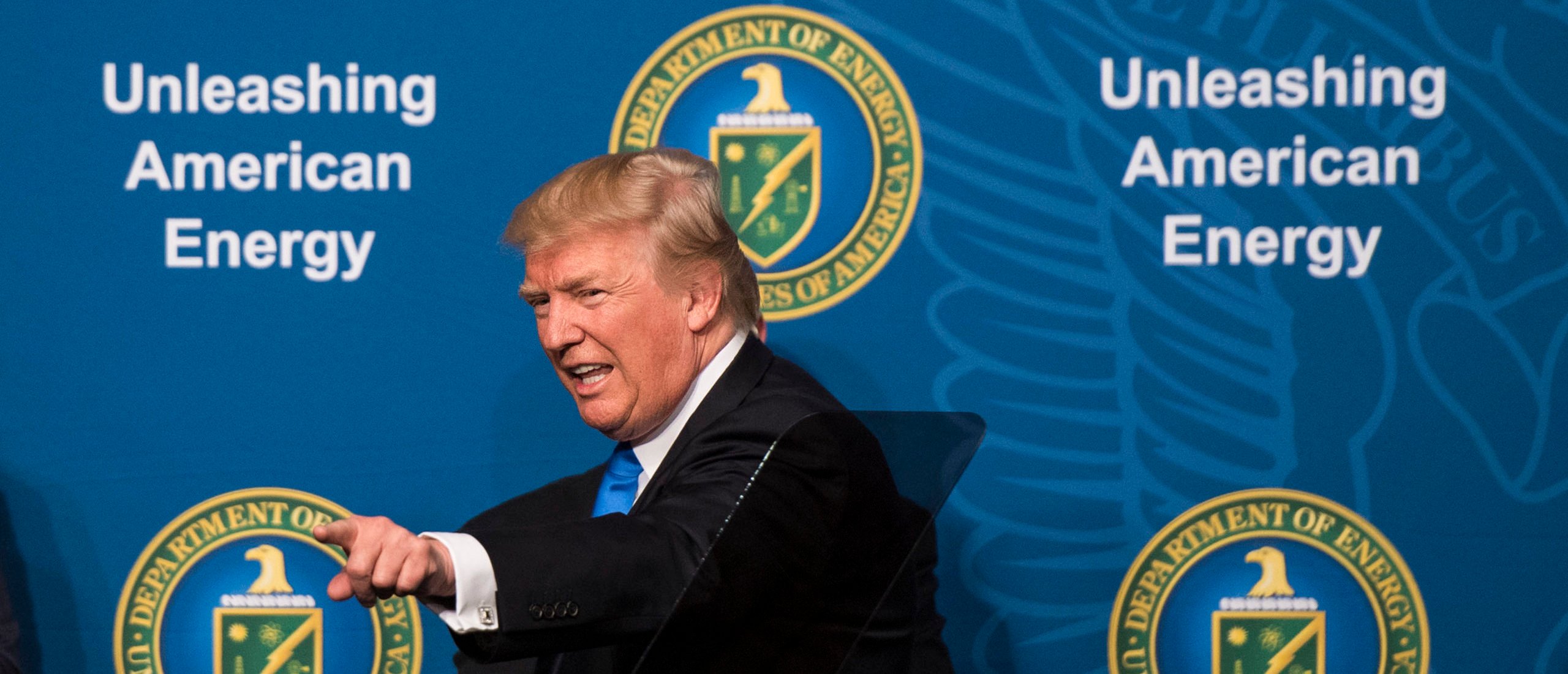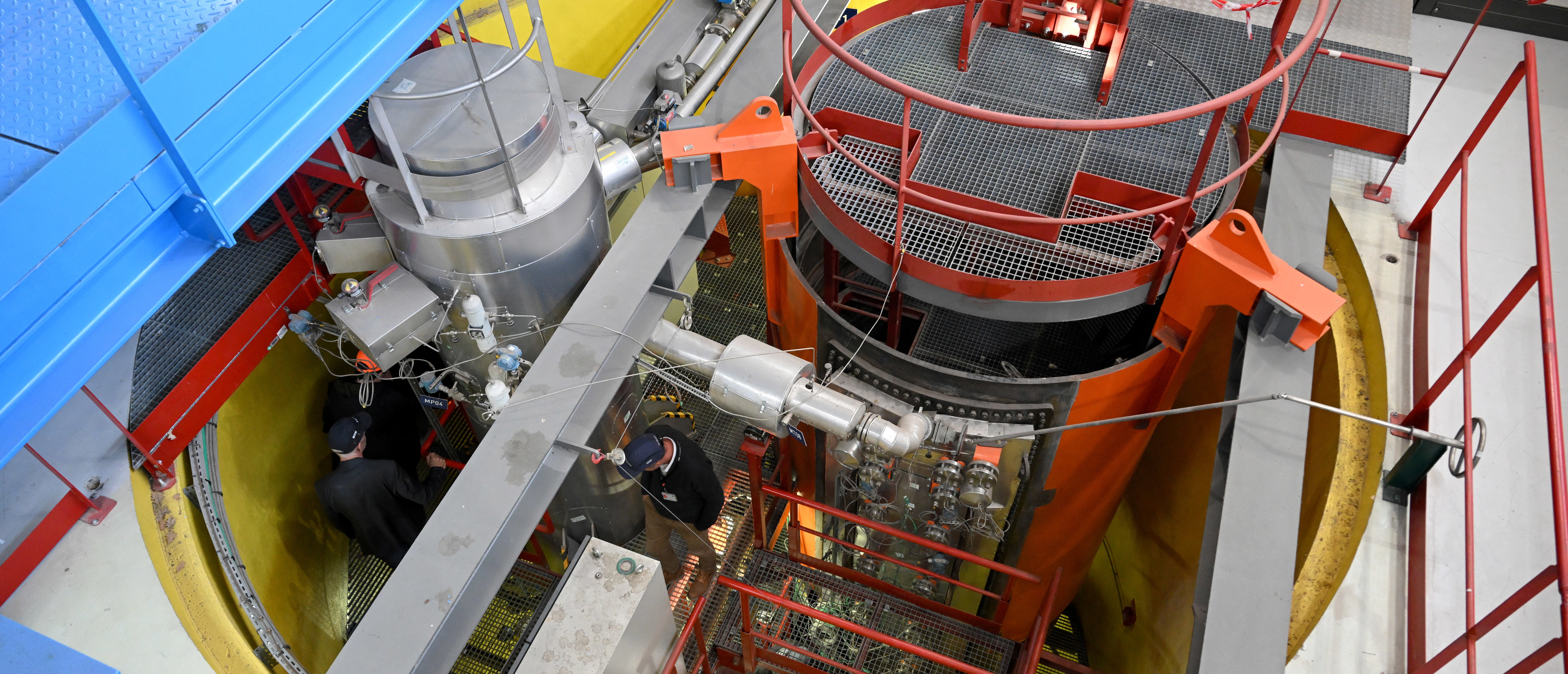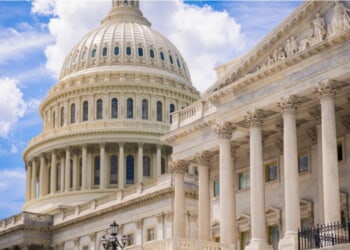The Trump administration has indicated a willingness to promote domestic nuclear energy production, though several industry experts say there are a number of obstacles that must be cleared first.
Immediately after returning to the White House, President Donald Trump signed an executive order on “unleashing American energy,” aiming to bolster domestic fossil fuel production, which the U.S. primarily relies on, and cut “undue burdens” on the nuclear energy sector. While the move signaled increased attention on the industry’s development, several policy experts told the Daily Caller News Foundation that many obstacles must be addressed before nuclear power can become a major source of energy in the U.S.
“In this country, we’ve made it so difficult that it’s almost impossible to build a nuclear power plant,” JD Foster, former chief economist at the Office of Management and Budget who would routinely sit in on meetings regarding nuclear regulatory policy, told the DCNF. “The Nuclear Regulatory Agency is one of the slowest moving entities in the universe when it comes to assessing new technologies and nuclear power.”
Foster and others in the nuclear energy arena pointed to several hurdles for the industry, including a long and stringent permitting process, a measly specialized workforce, nuclear waste management, federal regulations and public fears surrounding radiation.

U.S. President Donald Trump leaves the stage after delivering remarks at the Unleashing American Energy event at the Department of Energy on June 29, 2017 in Washington, DC. (Photo by Kevin Dietsch-Pool/Getty Images)
Although former Presidents Joe Biden and Barack Obama pursued an expansion of nuclear technology for its effective and reliable energy output, the U.S. still remains primarily reliant on fossil fuels. Biden, for example, signed the bipartisan ADVANCE Act into law in June 2024, which was designed to bring down the costs of nuclear licensing, create new opportunities for old industrial sites to host reactors and allocate additional resources to the NRC. Despite this, nearly all nuclear power currently produced in the U.S. comes from reactors built between 1967 and 1990, according to the World Nuclear Association. (RELATED: Nuclear Energy Could Be A Godsend For Biden’s Green Agenda. Here’s What’s Holding It Back)
Trump, who has a long track record of supporting nuclear energy development during his first term, has indicated that he is open to exploring avenues to expand the industry’s innovation.
Less than one month after returning to office, Trump established the National Energy Dominance Council and tasked its advisors with informing him on how to bring small modular reactors (SMRs), which have the capacity to continuously power 300,000 homes, online.
Trump’s Department of Energy (DOE) Secretary Chris Wright has also expressed a desire to increase development of nuclear energy technology.
“The long-awaited American nuclear renaissance must launch during President Trump’s administration,” Wright stated on Feb. 5 in his first secretarial order. “As global energy demand continues to grow, America must lead the commercialization of affordable and abundant nuclear energy. As such, the Department will work diligently and creatively to enable the rapid deployment and export of next-generation nuclear technology.”
“Nuclear is going to take hold,” Wright also said in a Fox Business interview shared by the DOE’s X account on April 2. “But it’s not going to come tomorrow, I wish it was.”
This envisioned “nuclear renaissance” lags behind a “huge” permitting problem, according to Foster. The length of time needed to complete the permitting process varies, with the NRC application review process taking up to five years in some cases, according to the U.S. Energy Information Administration.
“The [Nuclear Regulatory Commission] NRC has improved its licensing efficiency over the past few years,” a public affairs officer for the NRC wrote to the DCNF. The official pointed to the reduction in time needed to reach a licensing decision and a “drastically streamlined” application process that resulted in a nuclear reactor construction permit being issued within 18 months. The NRC also referenced their announcement that they are ahead of schedule for the “safety portion of our review for TerraPower’s construction permit application.”
“The agency is creating simplified licensing regulations for fusion power systems, focused on the most relevant safety considerations,” the NRC spokesperson wrote. “We’re continuing to build on these efficiency gains, following the requirements Congress laid out last year in the ADVANCE Act.”
Foster also told the DCNF that the nuclear industry faces a dwindling “specific workforce,” pointing to China and France as examples of nations that have enough workers with the expertise to bring nuclear power plants to life. “In this country, we don’t have that workforce,” Foster added, noting that it would take time and a great deal of funding to develop the appropriate workforce to build large nuclear reactors.
“We set an impossible goal,” Foster continued, referencing strict nuclear power regulations, some of which require a 10,000-year waste management requirement, which means that a nuclear waste repository must keep radiation doses to people below a safe limit after the waste is buried for 10,000 years.
The generation of nuclear power plants has been declining in the states since the 1990’s and only two large nuclear reactors have been built in the last 20 years. If the administration is to address the national energy emergency Trump declared on Jan. 20, and generate “a reliable, diversified, and affordable supply of energy,” SMRs are the practical way forward in the nuclear realm, according to Foster and a recent International Energy Agency report.
Unlike large nuclear power plants, SMRs can be assembled in a factory and built “over and over and over,” Foster said.
“Many in the Trump administration tout nuclear as the answer,” Tim Echols, a commissioner on the Georgia Public Service Commission that was involved in bringing the most recent nuclear reactors to life in 2023 and 2024, told the DCNF. “I have yet to see an incentive big enough to get us to build another AP1000,” Echols said, in reference to the models of the two reactors.
“To phase out fossil fuels, power data centers, and deploy electric transportation — SMRs are essential,” Echols continued. “SMRs can be built quicker and cheaper than big nuclear. That will allow states with smaller budgets to deploy advanced nuclear technology.”

Engineers walk in the Exocet installation of the Poseidon department during a press visit to CEA Cadarache in Saint-Paul-les-Durance, southern France, on November 23, 2023. The Poseidon unit conducts experimental studies on Small Modular Reactors (SMR). (Photo by Nicolas TUCAT / AFP) (Photo by NICOLAS TUCAT/AFP via Getty Images)
“There are a million things that make them [SMRs] attractive,” Heritage Foundation senior research fellow for energy and environmental policy Jack Spencer told the DCNF. He described SMRs as “reliable” energy options that are cheaper to build than large power plants.
Spencer also touched on other hurdles in the nuclear energy sphere. “Addressing the nuclear waste issue is a big one,” he said. “The government needs to put in place a plan that allows a resolution to nuclear waste management.”
Spencer suggested that the U.S. commit to “rethinking regulation,” though he does not champion deregulation.
He added that it would be beneficial if the administration could “allow uranium fuel markets to stabilize,” as SMRs are typically powered by uranium, and that the administration should ensure that the ADVANCE Act is “carried out in the spirit that the legislators intended when they passed that law.” (RELATED: Fueling the Future: LIS Technologies’ Solution to America’s Uranium Shortage)
“For anyone who fears exposure or low dose radiation, I’ll say two things,” Spencer continued. “The nuclear industry has a 70-year history of providing superior protection against radiation exposure. … We have a long history of demonstrating that industry can protect against low dose radiation exposure, one. Two, we should really follow the science on what the risk actually is.”
“I’m hoping that [Environmental Protection Agency] EPA will redo the radiation risk models,” Steve Milloy, a senior legal fellow at the Energy & Environment Legal Institute who also served on the Trump EPA transition team from 2016-2017, told the DCNF. “People are so scared of nuclear power and radiation. We haven’t seen any sickness … We have all this great technology that can’t be deployed because of fear of nuclear radiation.”
The most recent EPA radiation risk models are from 2011. Milloy argues that the models are too stringent and that until the “linear threshold models” are adjusted, there will be “no nuclear power in this country.”
.@SecretaryWright: “It’s been decades since we’ve built any meaningful nuclear capacity in this country… But President Trump is committed to getting this nuclear renaissance – that’s been talked about for years – going…We’re going to see some plant restarts. We’re going to see… pic.twitter.com/5GpId58zBr
— U.S. Department of Energy (@ENERGY) April 2, 2025
A spokesperson for DOE pointed the DCNF to Wright’s first secretarial order, writing that it “highlighted the need to streamline permitting, remove undue burdens on American energy and modernize America’s nuclear stockpile.”
“Secretary Wright and the Energy Department is hard at work to ensure the American nuclear renaissance is just around the corner,” the spokesperson wrote.
“The Department of Energy has been working diligently to enable the rapid deployment and export of next-generation nuclear technology. Secretary Wright has eased the regulations and permitting rules to enable new construction projects at the Department’s 17 National Labs. The Energy Department has also reissued a $900 million solicitation supportin
“Rest assured, we are just getting started,” the spokesperson also said.
All content created by the Daily Caller News Foundation, an independent and nonpartisan newswire service, is available without charge to any legitimate news publisher that can provide a large audience. All republished articles must include our logo, our reporter’s byline and their DCNF affiliation. For any questions about our guidelines or partnering with us, please contact licensing@dailycallernewsfoundation.org.





![Jasmine Crockett Justifies Mass Illegal Immigration With Bizarre Argument [WATCH]](https://www.right2024.com/wp-content/uploads/2025/03/1742007023_Jasmine-Crockett-Justifies-Mass-Illegal-Immigration-With-Bizarre-Argument-WATCH-350x250.jpg)


![NYC Tourist Helicopter Falls into Hudson River, Siemens Executive and Family Among Those Killed [WATCH]](https://www.right2024.com/wp-content/uploads/2025/04/NYC-Tourist-Helicopter-Falls-into-Hudson-River-Siemens-Executive-and-350x250.jpg)








